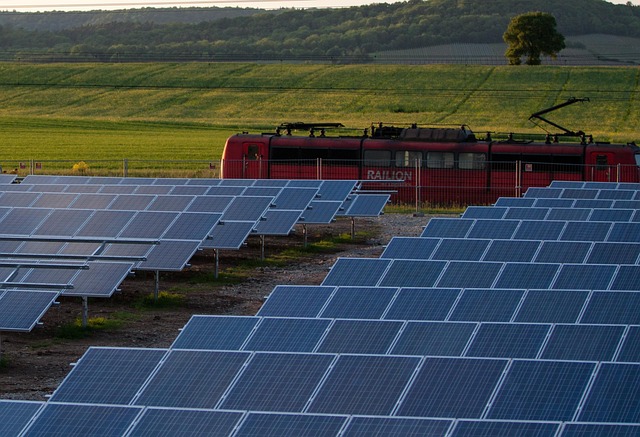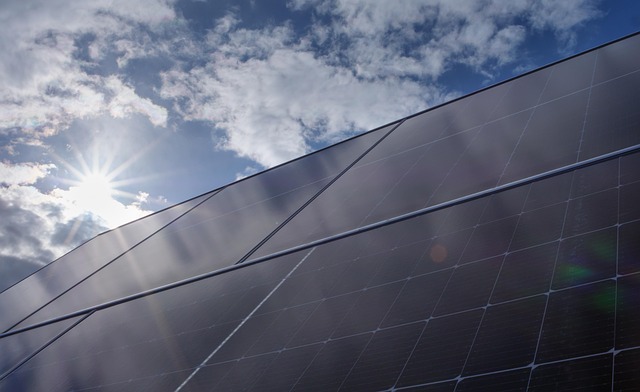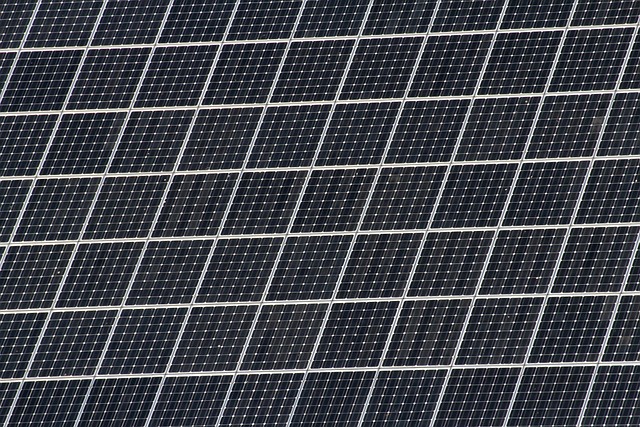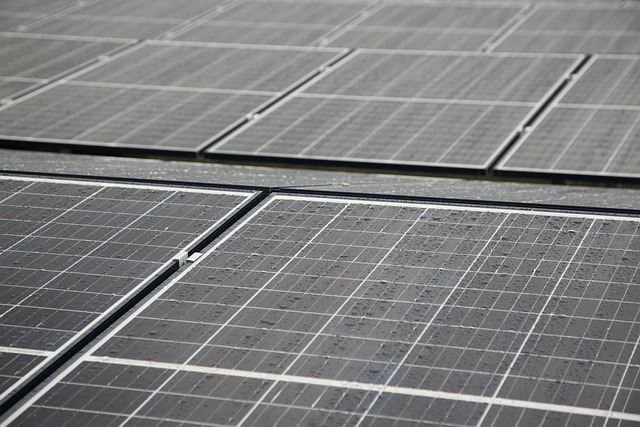A Deep Dive into Solar Energy Efficiency: Maximizing Power
As the world grapples with the escalating effects of climate change and the pressing need for sustainable energy sources, solar energy stands out as a leading contender for the future of energy generation. The transition from fossil fuels to renewable energy sources, particularly solar power, is no longer a backlog concern but a critical societal imperative. Understanding solar energy efficiency is key to maximizing this renewable resource, ensuring that we harness its full potential. This article delves deeply into solar energy efficiency, including its determinants, current technologies, measures for enhancement, and future advancements.
Understanding Solar Energy Efficiency
Solar energy efficiency refers to the proportion of sunlight that a solar panel converts into usable electricity. It is a crucial metric, as higher efficiency means more energy generated from the same amount of sunlight, leading to improved energy returns for consumers and businesses alike. The efficiency of solar panels can vary significantly based on various factors, including the technology used, environmental conditions, and system design. Typically, traditional silicon-based solar panels have efficiencies ranging from 15% to 22%, while more advanced technologies can reach efficiencies of over 40% when used in certain applications.
The Science Behind Solar Energy Generation
Solar energy generation primarily relies on photovoltaic (PV) technology or solar thermal systems, both of which use different principles to convert sunlight into energy. PV systems rely on the photovoltaic effect, where semiconductor materials absorb photons from sunlight, generating electric currents. Solar thermal systems collect sunlight to produce heat that can be used directly or converted into electricity using turbines. Understanding these technologies is essential to grasp why certain designs and materials yield higher efficiency than others.
Factors Affecting Solar Energy Efficiency
Numerous factors can impact the efficiency of solar panels. Some of these are inherent to the technology itself, while others are environmental or infrastructural. Key factors include:
- Solar Cell Material: The type of material used in solar cell production dramatically affects efficiency. Silicon, cadmium telluride, and gallium arsenide are common materials, each with its efficiency characteristics. Gallium arsenide, for example, is known for its high efficiency but is considerably more expensive to produce.
- Temperature: Solar panels can be less efficient in high temperatures. As the temperature increases, the semiconductor material’s ability to generate photovoltaic power decreases, necessitating optimal placement and cooling mechanisms.
- Orientation and Tilt: The geographical location and orientation of solar panels greatly influence their exposure to sunlight. Generally, panels that are oriented south at an angle that matches the latitude of the installation site tend to perform better.
- Shading: Even partial shading from trees or buildings can significantly impact the output of solar panels. Ensuring that installations are in unobstructed areas is crucial for maximizing efficiency.
- Inverter Efficiency: Solar inverters play a vital role in converting the generated direct current (DC) to alternating current (AC) for use within homes and businesses. High-efficiency inverters can maximize the energy extracted from the solar panels.
- System Design: The configuration of the entire system, including the arrangement of panels and electrical connections, can lead to variations in efficiency. Proper design ensures minimal energy losses during transmission and maximizes performance under various conditions.
Current Technological Advances in Solar Energy
The ongoing evolution in solar technology has introduced innovative materials and approaches that significantly improve efficiency. Below are some notable advancements:
Monocrystalline Solar Cells
Monocrystalline solar cells are made from a single crystal structure, which allows electrons to move freely, resulting in higher efficiency rates—typically over 20%. Their sleek design and longevity make them a popular choice among homeowners and commercial installations.
Polycrystalline Solar Cells
Although slightly less efficient than their monocrystalline counterparts, polycrystalline solar cells offer advantages in terms of manufacturing cost and environmental footprint. They are made from multiple crystal structures and generally have efficiencies ranging from 15% to 20%.
Thin-Film Solar Cells
Thin-film solar cells utilize layers of photovoltaic materials just a few micrometers thick. While they typically offer lower efficiencies (10% to 15%), their lightweight and flexibility allow integration into a broader range of applications, such as building-integrated photovoltaics (BIPV).
Bifacial Solar Panels
Bifacial solar panels are designed to capture sunlight on both sides, thereby increasing overall energy production. They can take advantage of reflection from the ground, making them especially effective in snowy or sandy environments.
Concentrated Photovoltaics (CPV)
Concentrated photovoltaics use mirrors or lenses to focus sunlight onto small, efficient solar cells. This technology can achieve efficiency rates upwards of 40%, but requires direct sunlight and usually operates most effectively in utility-scale installations in sunny regions.
Enhancing Solar Energy Efficiency
While current technologies already provide valuable efficiency gains, additional strategies exist to enhance solar energy performance further. These strategies can be applied across various systems, from residential to utility-scale solar farms.
Maximizing Sun Exposure
Proper installation and site selection are vital. Installing solar panels in an area with maximum sun exposure and minimal shading can lead to significant improvements in performance. Tracking systems that automatically adjust the angle of panels throughout the day can also optimize sunlight capture.
Regular Maintenance
Maintaining solar panels ensures they operate at peak efficiency. Regular cleaning to remove dust and debris, along with inspections to identify any system faults or energy losses, can prolong the life of the system and enhance its energy output.
Energy Storage Solutions
Incorporating energy storage systems allows for the efficient use of solar energy generated during the day, storing excess energy for use during nighttime or cloudy periods. Technologies like lithium-ion batteries provide significant benefits by ensuring that generated energy does not go to waste.
Hybrid Systems
Combining solar energy with other forms of renewable energy, such as wind power, offers resilience and improved efficiency. Hybrid systems can ensure a more consistent energy supply, reducing dependence on any single energy source.
The Future of Solar Energy Efficiency
The future of solar energy efficiency is heavily intertwined with advancements in materials science, engineering, and technology. As researchers and companies continue to innovate, we can expect a variety of new trends and developments:
Perovskite Solar Cells
Perovskite solar cells present a promising alternative to traditional silicon cells, combining high efficiency with low production costs. Although stability and longevity are areas for improvement, recent developments have demonstrated rapid advancements in perovskite technology.
Smart Solar Technologies
Integrating smart technologies with solar energy systems, such as the Internet of Things (IoT) and artificial intelligence (AI), allows for advanced monitoring and optimization of energy production. These technologies can predict energy generation based on weather patterns in real-time, adjusting usage accordingly.
Enhanced Recycling and Sustainability
As the demand for solar panels rises, so does the necessity for sustainable manufacturing and recycling processes. Innovations in recycling technologies will lead to reduced waste and environmental impact, making solar energy even more sustainable.
Conclusion
Solar energy efficiency is a critical area of focus for a sustainable future. From understanding the principles behind energy generation to the materials and technologies involved, it is evident that maximizing solar power generation requires a comprehensive approach that involves not only technological advancements but also mindful system design, strategic implementation, and ongoing maintenance. The future of solar energy is bright, and as we continue to innovate and improve efficiency, solar power will undoubtedly play a central role in fostering a cleaner and more sustainable energy landscape.
Through ongoing research and an increasing commitment to renewable energy, society is poised to harness the sun’s immense power not only as a viable power source but as a cornerstone of a sustainable future.



